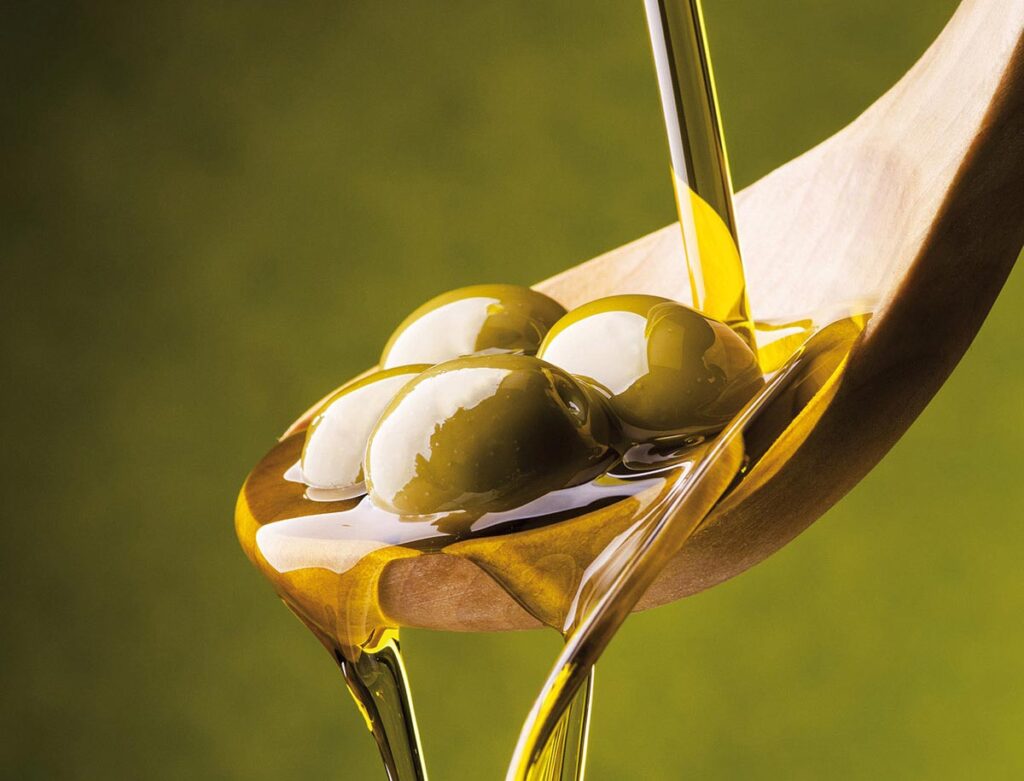Olive oil from the Treviso hills
The extra virgin olive oil from the Treviso hills is produced in the Trevigiana foothills, in the area between the borders with the Provinces of Vicenza to the west and Pordenone to the east.
The municipalities concerned are those of Asolo, Borso del Grappa, Castelcucco, Cavaso del Tomba, Conegliano, Cornuda, Crespano del Grappa, Fonte, Maser, Monfumo, Pederobba, Possagno, San Zenone degli Ezzelini, Susegana, Valdobbiadene and Vittorio Veneto, for which the PDO has also been granted “Veneto del Grappa”, to which are added the Cappella Maggiore, Cison di Valmarino, Colle Umberto, Cordignano, Follina, Fregona, Giavera del Montello, Montebelluna, Nervesa della Battaglia, Paderno del Grappa, Refrontolo, San Fior, San Pietro di Feletto , Sarmede, Tarzo and Volpago del Montello, for which the DOP is being recognized.
Other less suitable municipalities, in which olive growing in the Treviso area is practiced, in some in a more marginal form, are Altivole, Caerano San Marco, Carbonera, Casale sul Sile, Castelfranco Veneto, Castello di Godego, Crocetta del Montello, Farra di Soligo, Follina, Miane, Oderzo, Orsago, Pieve di Soligo, Ponzano, Revine Lago, Segusino, Sernaglia della Battaglia, Trevignano, Treviso, Vidor.
TASTING OF OLIVE OIL
Not all olive oil is the same, but it can vary depending on the region of origin. As with wine, the soil, climate and other conditions determine different characteristics, flavors and aromas: knowing and appreciating them is fundamental in evaluating and estimating an oil. The evaluation of the quality of olive oils is based on the determination of some chemical parameters (acidity, number of peroxides, absorption under ultraviolet light), however, insufficient to formulate a judgment on the quality level of the product. Therefore, it is also necessary to consider the organoleptic characteristics: to make the assessment of the organoleptic characteristics of the olive oil as objective as possible, after years of testing, a sensory evaluation method based on the “Panel Test “Where 10 tasters trained to appreciate the olfactory-gustatory characteristics of olive oils fill out a guide card and ascertain the presence and intensity of the basic sensations (strengths and weaknesses) tasting olive oil is a little known technique and arouses in particular interest and curiosity on the part of the general public. The difference between the tasting of oil and the tasting of wine, grappa, coffee, etc. it consists, above all, in the fact that the latter refer to foods that at the table can be tasted alone and appreciated for what they are, while oil always accompanies other foods, enhancing or attenuating their flavor.
NAME AND DEFINITIONS OF OILS OBTAINED FROM OLIVES
VIRGIN OLIVE OIL:
Oils obtained from the fruit of the olive tree, only by mechanical or physical means and in particular in thermal conditions that do not involve alterations of the oil and that are not subjected to any treatment other than washing, decanting, centrifugation and filtration. They are further classified:
REFINED OLIVE OIL:
Olive oil obtained from virgin oils by refining methods that do not alter the original glyceride structure.
OLIVE OIL:
Olive oil obtained by mixing refined oil and virgin oil, suitable for consumption as it is.
OLIVE POMACE OIL:
It is the oil obtained by treating the olive pomace with solvents, with the exclusion of oils obtained through re-sterification processes and any mixture with other types of oils.
Extra virgin olive oil from Reitia
It is obtained exclusively with olives from the Treviso foothills and partly from Pordenone, it is cold extracted from different cultivars with a prevalence of leccino and frantoio, using cutting-edge production techniques with hermetic kneaders that work in a controlled atmosphere and temperature.
The varieties present in this area, the composition of the soils, the microclimate and the high technology used make it possible to obtain a superior quality oil, with very low acidity and unique aromas and flavors. It is very harmonious and has very high olfactory sensations reminiscent of freshly cut grass, aromatic herbs, artichokes and fresh almonds, a sign of freshness and excellent preservation of the product.
The bitter and spicy are in excellent harmony and the comparison between aromas and flavors is excellent. From a chemical point of view, the product has high quality parameters with a good ratio between fatty acids, oleic acid and polyphenols present. An oil of limited production and with high health characteristics intended for a competent consumer who knows how to appreciate the requirements of excellence.
The technical sheet
Area of origin
Veneto – Treviso Hills.
Variety of olives
50% frantoio and leccino (jointly)
50% grignano, holm oak

